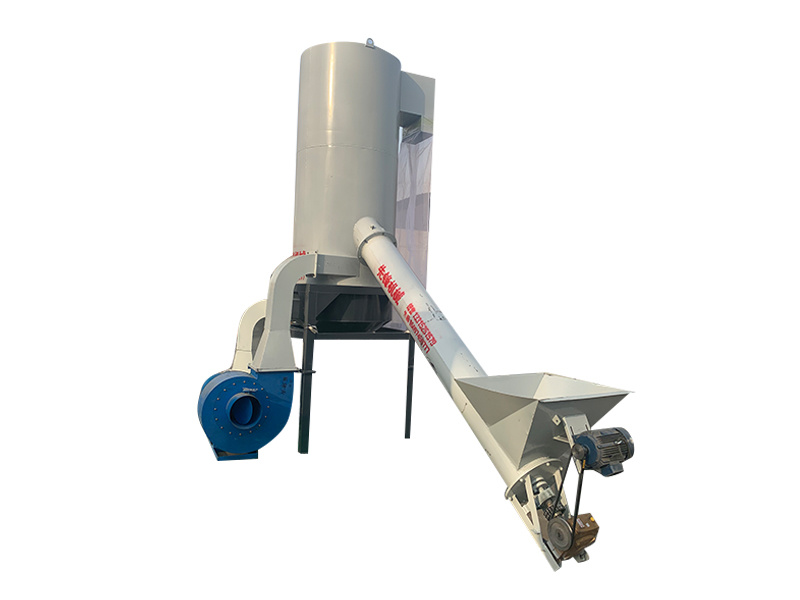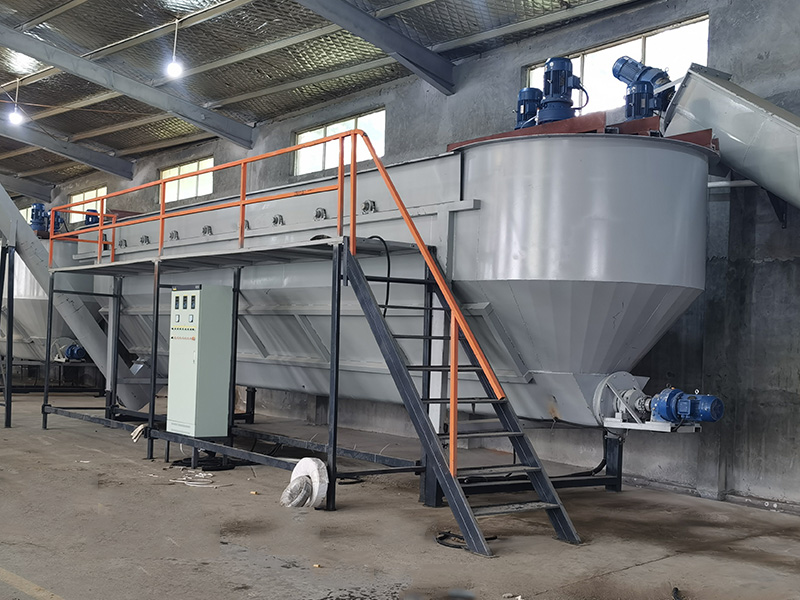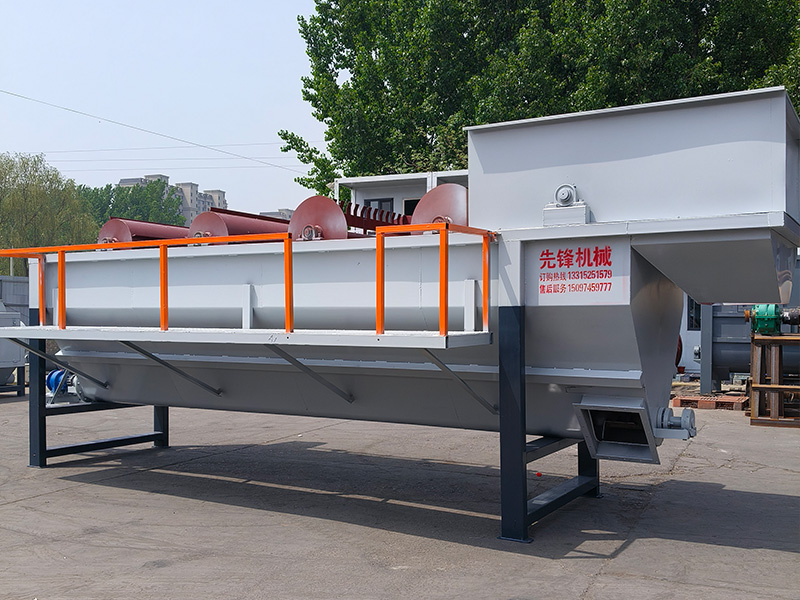Maximize Efficiency with Advanced Wind Sorter Technology: Revolutionizing Manufacturing Processes
Maximize Efficiency with Advanced Wind Sorter Technology
Table of Contents
1. Introduction to Advanced Wind Sorter Technology
2. What is Wind Sorter Technology?
3. Key Benefits of Implementing Wind Sorter Technology
4. How Wind Sorter Technology Works
5. Applications in Various Industries
6. Choosing the Right Wind Sorter System for Your Needs
7. Case Studies: Successf
Jul 10,2025

Maximize Efficiency with Advanced Wind Sorter Technology
Table of Contents
- 1. Introduction to Advanced Wind Sorter Technology
- 2. What is Wind Sorter Technology?
- 3. Key Benefits of Implementing Wind Sorter Technology
- 4. How Wind Sorter Technology Works
- 5. Applications in Various Industries
- 6. Choosing the Right Wind Sorter System for Your Needs
- 7. Case Studies: Successful Implementations
- 8. The Future of Wind Sorter Technology in Manufacturing
- 9. Frequently Asked Questions
- 10. Conclusion
1. Introduction to Advanced Wind Sorter Technology
In the ever-evolving landscape of manufacturing, maximizing efficiency is crucial. Advanced Wind Sorter Technology stands at the forefront of this movement, offering innovative solutions for the sorting and separation of materials. This article delves into the intricacies of wind sorters, shedding light on how they revolutionize processes, enhance productivity, and ultimately lead to significant cost savings.
2. What is Wind Sorter Technology?
Wind Sorter Technology employs a unique mechanism that utilizes air currents to sort materials based on weight, shape, and density. This technology is particularly effective in industries that handle bulk materials, such as recycling, mining, and waste management. By harnessing the power of air, wind sorters can efficiently separate lighter materials from heavier ones, ensuring a cleaner and more precise sorting process.
Understanding the Mechanism
The core operation of wind sorting involves a series of fans and air jets that create a controlled airflow. When mixed materials are fed into the system, the air currents lift lighter items while heavier ones remain on the conveyor belt. This method not only reduces mechanical wear but also minimizes energy consumption, making it an environmentally friendly option.
3. Key Benefits of Implementing Wind Sorter Technology
The adoption of Wind Sorter Technology brings a multitude of advantages that contribute to enhanced operational efficiency.
Improved Sorting Accuracy
By utilizing air currents, wind sorters can achieve a higher level of accuracy in separating different materials. This precision reduces contamination rates, leading to higher-quality end products.
Cost Efficiency
Wind sorters require less energy compared to traditional mechanical sorting methods. This efficiency can lead to substantial savings in operational costs over time.
Reduced Maintenance Requirements
With fewer moving parts, wind sorter systems tend to have lower maintenance needs. This reliability translates into reduced downtime and increased productivity.
Environmental Sustainability
Wind Sorter Technology aligns with sustainability goals by minimizing energy consumption and maximizing material recovery. This eco-friendly approach is becoming increasingly important in today’s manufacturing landscape.
4. How Wind Sorter Technology Works
Understanding the operational mechanics of wind sorters provides insight into their effectiveness.
System Components
A typical wind sorting system consists of the following components:
- **Feed Hopper**: Where materials are initially fed into the system.
- **Conveyor Belt**: Transports materials through the sorting process.
- **Air Jets**: Generate the necessary airflow to lift lightweight materials.
- **Control System**: Regulates air pressure and sorting parameters for optimized performance.
Sorting Process Overview
The sorting process begins when mixed materials enter the feed hopper. The conveyor belt moves the materials toward the air jets. As air is blown upwards, lighter materials are lifted and directed into designated collection bins, while heavier items continue down the conveyor for further processing.
5. Applications in Various Industries
Wind Sorter Technology finds applications across diverse sectors, enhancing efficiency in numerous processes.
Recycling Industry
In recycling, wind sorters play a pivotal role in separating plastics, paper, and metals from mixed waste streams. Their ability to accurately sort materials contributes to higher recycling rates and better quality recyclables.
Mining and Minerals Processing
In the mining sector, wind sorters help in the separation of valuable minerals from waste materials. This enhanced sorting capability increases yield and minimizes the environmental impact of mining operations.
Agriculture and Food Processing
In agriculture, wind sorters can effectively separate seeds, grains, and other lightweight materials from heavier debris, ensuring higher purity and quality in food products.
6. Choosing the Right Wind Sorter System for Your Needs
Selecting the appropriate wind sorter system involves several considerations to ensure optimal performance.
Material Type and Size
Different materials require specific sorting configurations. Understanding the type and size of the materials being sorted is crucial in selecting the right system.
Throughput Requirements
Evaluating the volume of materials to be processed will determine the capacity needed for the wind sorter. Ensuring that the system can handle the expected throughput will maximize efficiency.
Integration with Existing Systems
Consider how the wind sorter will integrate with your existing machinery. A seamless integration can enhance overall operational efficiency.
7. Case Studies: Successful Implementations
Real-world implementations of Wind Sorter Technology provide valuable insights into its effectiveness.
Case Study 1: Recycling Facility
A recycling facility adopted wind sorter technology to enhance their sorting process. The facility reported a 30% increase in sorting accuracy and a 20% reduction in operational costs within the first year of implementation.
Case Study 2: Mining Operation
A mining company integrated wind sorting in their mineral processing line. This resulted in a 15% increase in yield and significant savings on energy costs, highlighting the technology's impact on resource efficiency.
8. The Future of Wind Sorter Technology in Manufacturing
As industries increasingly focus on sustainability and efficiency, the future of Wind Sorter Technology looks promising. Ongoing research and development aim to enhance the capabilities of wind sorters, potentially incorporating AI and machine learning for even greater precision and adaptability.
9. Frequently Asked Questions
What materials can be sorted using wind sorter technology?
Wind sorter technology is effective for materials such as plastics, paper, metals, and various lightweight debris.
Is wind sorter technology environmentally friendly?
Yes, wind sorter systems consume less energy compared to traditional methods, making them a more sustainable choice.
How does wind sorter technology compare to mechanical sorting methods?
Wind sorters offer higher accuracy, lower maintenance, and reduced energy consumption compared to mechanical sorting.
Can wind sorter technology be integrated with existing systems?
Absolutely, wind sorter systems can be designed to integrate seamlessly with existing manufacturing setups.
What are the cost implications of implementing wind sorter technology?
While the initial investment may be significant, the long-term savings in operational costs often make it economically beneficial.
10. Conclusion
Advanced Wind Sorter Technology represents a significant advancement in the manufacturing industry, providing innovative solutions for material sorting and separation. With its numerous benefits, including increased efficiency, reduced costs, and improved sustainability, wind sorters are set to play an essential role in future manufacturing processes. As industries continue to evolve, embracing such technologies will be crucial for staying competitive and environmentally responsible. Adopting Advanced Wind Sorter Technology is not just an operational enhancement; it is a commitment to innovation and sustainability in manufacturing.
TAG:
Contact Us
E-mail :
Phone/WhatsApp:
Address:
Shunping, Baoding City, Hebei Province









